Your cart is currently empty!
Month: July 2024
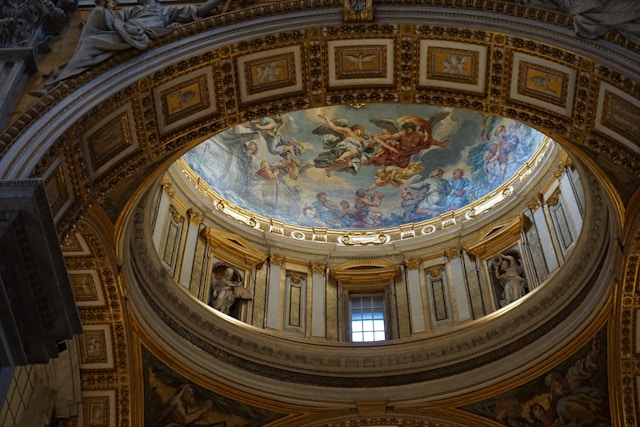
Monumental VBS: An Oasis of Spiritual Growth for Children
Introduction
Monumental Vacation Bible School (VBS) is an immersive program designed to provide children with an awe-inspiring journey through God’s Word. With its captivating themes, experiential learning, and dedicated team of volunteers, Monumental VBS serves as an oasis of spiritual growth and unforgettable memories.
Section 1: Thematic Explorations
A. Biblical Foundations
Monumental VBS focuses on the foundational truths of the Bible, fostering children’s understanding of God’s character, salvation, and purpose for their lives. Through interactive teachings, storytelling, and hands-on activities, children embark on a transformative exploration of their faith.
B. Adventures in History
Harnessing the power of imagination, Monumental VBS transports children to historical Biblical settings. They interact with characters from the past, witness miracles, and learn from the lives of those who have walked in faith before them. This immersive experience deepens their appreciation for the historical context of the Bible.
Section 2: Engaging Activities
A. Hands-On Learning
Monumental VBS believes that children learn best by doing. Every activity is meticulously crafted to engage their minds, bodies, and spirits. From building sets to craft projects and science experiments, each activity reinforces Biblical truths and fosters a love for learning.
B. Creative Expression
Through music, art, and drama, Monumental VBS provides a platform for children to express their creativity and connect with God on a deeper level. Songs, plays, and artwork become avenues for worship, reflection, and spiritual growth.
Section 3: Community and Relationships
A. Building Bonds
Monumental VBS creates a warm and welcoming environment where children can connect with their peers and forge lifelong friendships. Through team-building activities and shared experiences, they learn the value of unity, support, and belonging.
B. Nurturing Mentors
A dedicated team of volunteers serves as mentors and role models for the children. These individuals provide spiritual guidance, encourage growth, and demonstrate the transforming power of living a life of faith.
Section 4: Lasting Impact
A. Transformed Hearts
Monumental VBS aims to plant seeds of faith in the hearts of children. Through repeated exposure to God’s Word, engaging activities, and a supportive community, their understanding of Christianity deepens, preparing them for a lifetime of discipleship.
B. Meaningful Memories
Monumental VBS is a formative experience that leaves a lasting impression on children. The friendships formed, the lessons learned, and the joy experienced become treasured memories that inspire them long after the program has ended.
Tips for Attending Monumental VBS
* Research Themes: Explore the available VBS themes to find one that resonates with your child’s interests.
* Register Early: Secure your spot by registering early, as programs tend to fill up quickly.
* Prepare Your Child: Explain the purpose of VBS, pray together, and encourage your child to be open to new experiences.
* Attend Regularly: Regular attendance ensures that your child benefits from the full program and establishes valuable routines.
* Connect with Volunteers: Introduce yourself to the volunteers and let them know about any specific needs or concerns your child may have.
* Celebrate Success: Acknowledge your child’s participation and growth throughout the program.
* Follow Up: Continue to engage your child in faith-building activities after VBS to reinforce the lessons learned.Conclusion
Monumental VBS is more than just a summer program; it’s an investment in the spiritual development of children. By providing an immersive experience filled with Biblical truths, engaging activities, and transformative relationships, it nurtures their faith, sparks a love for learning, and creates memories that will last a lifetime. As children embark on this monumental journey, they discover the transformative power of God’s Word and the joy of living in community with Christ.
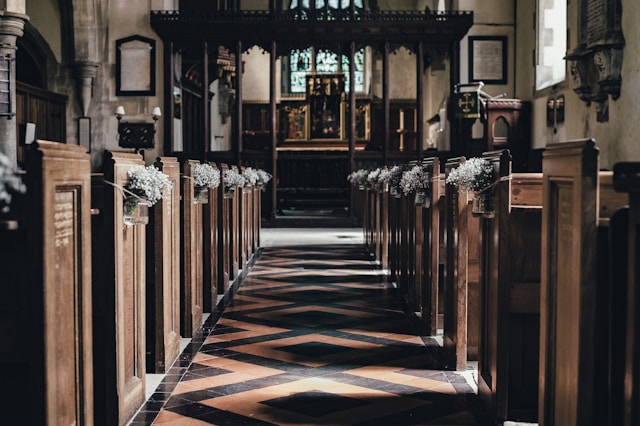
Pope Francis: A Comprehensive Guide to the Catholic Church’s Current Leader
Introduction
Pope Francis, the 266th pope of the Catholic Church, has been a transformative figure since his election in 2013. His humble demeanor, open-mindedness, and commitment to social justice have captivated people around the world. This guide will delve into Pope Francis’s life, papacy, and the significant impact he has made on the Catholic Church and beyond.
Early Life and Vocation
Jorge Mario Bergoglio was born in Buenos Aires, Argentina, on December 17, 1936. He studied chemical technology before entering the Society of Jesus (Jesuits) in 1958. He was ordained a priest in 1969 and served in various pastoral roles in Argentina.
Episcopal Ministry
In 1992, Bergoglio was appointed auxiliary bishop of Buenos Aires. He became archbishop in 1998 and cardinal in 2001. As archbishop, he focused on the poor and marginalized, advocating for social justice and dialogue with other faiths.
Papal Election and Pontificate
Election and Papal Name
On March 13, 2013, the College of Cardinals elected Bergoglio as the new pope. He took the name Francis, in honor of Saint Francis of Assisi, known for his humility and love for the poor.
Major Themes and Initiatives
- Social Justice and Poverty: Pope Francis has consistently emphasized the need to address global poverty and inequality. He has called for economic reforms, debt relief, and the care of the marginalized.
- Environmental Protection: The pope has been a vocal advocate for environmental protection and climate action. His encyclical Laudato Si’ (2015) called for ecological conversion and a radical change in human behavior towards the planet.
- Interfaith Dialogue: Pope Francis has made interfaith dialogue a priority. He has met with leaders of other religions, promoting mutual understanding and cooperation.
- Church Reform and Transparency: The pope has initiated reforms within the Catholic Church, including efforts to combat sexual abuse, promote financial transparency, and increase the participation of the laity in decision-making.
Encyclicals and Apostolic Exhortations
Encyclical/Exhortation Year Major Themes Lumen Fidei 2013 The nature of faith Evangelii Gaudium 2013 The joy of the Gospel and renewal of the Church Laudato Si’ 2015 Environmental protection and climate change Amoris Laetitia 2016 On love in the family Gaudete et Exsultate 2018 On the call to holiness in the modern world Impact on the Catholic Church
Pope Francis’s papacy has had a profound impact on the Catholic Church:
- Increased Openness and Inclusivity: Pope Francis has fostered a more welcoming and inclusive church, reaching out to marginalized groups, such as LGBTQ+ people.
- Emphasis on Evangelization: The pope has called for a missionary church, encouraging Catholics to share their faith and invite others into the church.
- Renewed Focus on Pastoral Care: Pope Francis has emphasized the importance of pastoral care, encouraging priests to be close to their communities and to accompany people in their faith journeys.
Impact on the Wider World
Pope Francis’s message has resonated beyond the Catholic Church, reaching people of different faiths and backgrounds:
- Global Advocate for Peace: The pope has used his platform to denounce violence and promote peace worldwide.
- Voice for the Poor and Marginalized: Pope Francis has become a powerful voice for the poor, calling for an end to poverty and inequality.
- Environmental Leadership: His encyclical Laudato Si’ has inspired environmental movements and raised awareness about the need to protect the planet.
Challenges and Controversies
While Pope Francis has been widely praised, his papacy has not been without challenges and controversies:
- Internal Disagreements: Some traditionalist Catholics have criticized Pope Francis’s reforms and teachings, claiming he is straying from the Church’s doctrine.
- Sexual Abuse Crisis: The pope has faced criticism for his handling of the sexual abuse crisis within the Catholic Church.
- Relationship with China: Pope Francis’s efforts to improve relations with China have faced obstacles and raised concerns about religious freedom in the country.
Conclusion
Pope Francis has been a transformative figure in the Catholic Church and beyond. His humble demeanor, commitment to social justice, and emphasis on interfaith dialogue have captivated people worldwide. While his papacy has faced challenges, he has left a lasting impact on the Church and the wider world. Pope Francis’s legacy is likely to be debated for years to come, but there is no doubt that he will be remembered as one of the most influential popes in history.
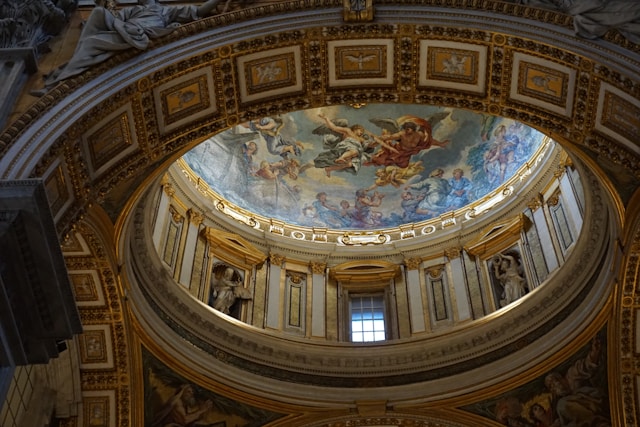
USCCB Daily Reading: Your Daily Dose of Spiritual Nourishment
Introduction
The United States Conference of Catholic Bishops (USCCB) Daily Reading is a valuable resource for Catholics seeking spiritual nourishment and guidance in their daily lives. It provides a comprehensive collection of daily readings from the Scriptures, the writings of the saints, and other sources, offering insights and inspiration for personal and communal growth in faith.
Understanding the USCCB Daily Reading
The USCCB Daily Reading is based on the Liturgical Calendar of the Catholic Church. Each day, it comprises the following components:
- Opening Prayer: A prayer to invoke God’s guidance and inspiration.
- First Reading: A passage from the Old Testament or the Acts of the Apostles.
- Responsorial Psalm: A psalm that responds to the First Reading.
- Gospel Reading: A passage from one of the four Gospels.
- Reflection: A short reflection or commentary on the day’s readings.
- Closing Prayer: A prayer to conclude the daily reading and ask for God’s blessings.
Benefits of Using the USCCB Daily Reading
Regularly engaging with the USCCB Daily Reading offers numerous benefits, including:
- Deepening Faith: The daily readings provide insights into the Word of God, fostering a deeper understanding of Catholic beliefs and teachings.
- Spiritual Growth: By reflecting on the readings, individuals can identify areas for personal growth and transformation.
- Community Building: The Daily Reading connects Catholics around the world, fostering a sense of unity and shared faith.
- Prayerful Practice: The readings, prayers, and reflections encourage a daily prayer life, strengthening one’s relationship with God.
Accessing the USCCB Daily Reading
The USCCB Daily Reading is available in several formats:
- Website: USCCB Daily Readings
- Mobile App: Available for download on the App Store and Google Play.
- Print Edition: The Daily Readings are published in a physical booklet distributed through Catholic parishes and other organizations.
Tips for Effective Daily Reading
To maximize the benefits of the USCCB Daily Reading, consider these tips:
- Set Aside Time: Dedicate a specific time each day for reading and reflection.
- Read Attentively: Pay attention to the text, not just reading the words but actively engaging with their meaning.
- Reflect Deeply: Take time to ponder the readings, considering their relevance to your personal life and spiritual journey.
- Pray Responsively: Use the prayers provided in the Daily Reading or create your own to express your response to God’s Word.
- Share with Others: Discuss the Daily Reading with friends, family, or members of a faith community to enhance understanding and foster spiritual growth.
Conclusion
The USCCB Daily Reading is an invaluable tool for spiritual nourishment, guidance, and community. By regularly engaging with its sacred texts, reflections, and prayers, Catholics can deepen their faith, foster spiritual growth, and build a closer relationship with God.
Remember, the Daily Reading is not merely a collection of words on a page but a living source of inspiration and renewal. May it enrich your daily life and illuminate your path toward eternal salvation.
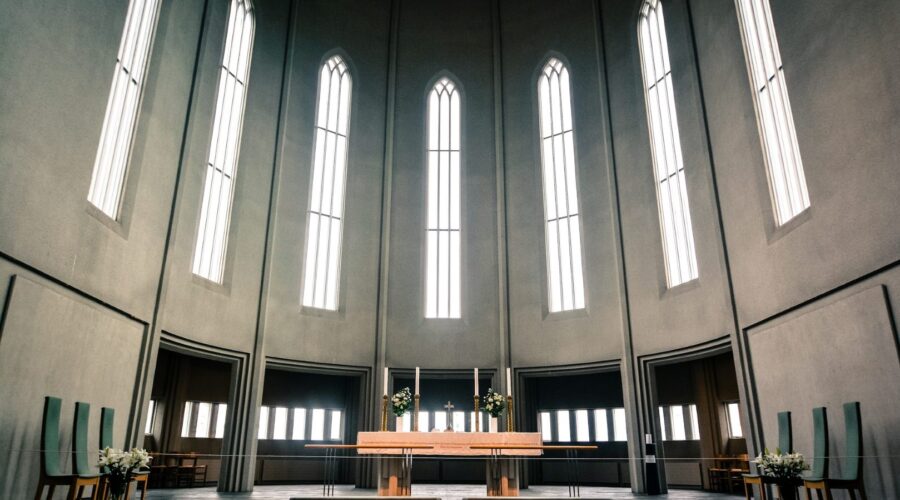
Discover the Life and Impact of Pastor John Hagee
Early Life and Calling
John Hagee was born on April 12, 1940, in Goose Creek, Texas. From a young age, he exhibited a remarkable interest in the Bible and a strong faith. After graduating from high school, he pursued a degree in biblical studies at the Texas Bible College and Seminary.
At the age of 19, Hagee felt a powerful calling to the ministry. He initially hesitated, but after seeking guidance from his mentors, he accepted his destiny.
Founding Cornerstone Church
In 1968, Hagee founded Cornerstone Church in San Antonio, Texas, with a congregation of only 30 members. Through his dynamic preaching and unwavering commitment, the church grew rapidly.
Today, Cornerstone Church is one of the largest and most influential evangelical churches in the United States, with over 20,000 members and a global reach through its television and online ministries.
Theological Beliefs and Controversies
Pastor Hagee is known for his conservative theological beliefs. He strongly advocates for the inerrancy of Scripture, the deity of Christ, and the importance of Israel in God’s plan.
However, some of Hagee’s views have been controversial, including his statements on Islam and his support for a strong U.S.-Israel alliance.
Political Activism and Outreach
Beyond his pastoral responsibilities, Hagee is an active political advocate. He founded the Christian United for Israel (CUFI) organization, which promotes support for Israel.
Hagee has also been involved in various humanitarian efforts, including disaster relief and interfaith dialogue.
Leadership and Accomplishments
Pastor Hagee is a respected and influential leader in the evangelical community. He has authored over 30 books, including best-sellers such as “Four Blood Moons” and “Jerusalem Countdown.”
Hagee has been recognized for his accomplishments with numerous awards and honors, including the National Religious Broadcaster’s Lifetime Achievement Award.
Controversy and Criticism
Pastor Hagee’s beliefs and political activism have drawn both praise and criticism. Some critics have questioned his theological interpretations, while others have criticized his stance on certain political issues.
However, Hagee’s supporters maintain that he is a faithful servant of God who stands up for biblical truth.
The John Hagee Ministries (JHM)
JHM is a global ministry organization that includes Cornerstone Church, CUFI, and various other outreach programs.
- Cornerstone Church: The flagship church in San Antonio, Texas.
- CUFI: Christian United for Israel, an organization that promotes support for Israel.
- Global Evangelism: Outreach programs to reach people worldwide with the Gospel.
- Humanitarian Aid: Disaster relief and assistance to those in need.
Conclusion
Pastor John Hagee is a complex and influential figure in the evangelical world. His unwavering faith, dynamic preaching, and political activism have shaped his legacy both within and outside the church.
Whether you agree or disagree with his views, there is no denying the impact he has had on the religious and political landscape of our time.
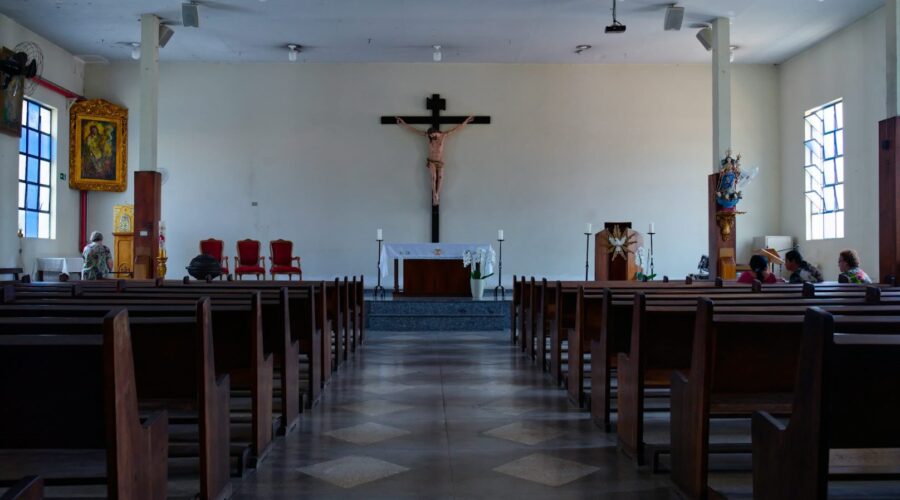
Saint Mary: A Journey of Faith, Devotion, and Inspiration
Saint Mary, also known as the Virgin Mary, Mother of God, and Theotokos, holds a profound place in Christianity and human history. Her life and teachings continue to inspire millions worldwide. This comprehensive blog post will delve into the life, significance, and impact of Saint Mary, providing readers with a deeper understanding of her role in faith, devotion, and spirituality.
Mary in the Bible
The Gospels of Matthew and Luke provide accounts of Mary’s life and her pivotal role in the birth and upbringing of Jesus Christ. According to the biblical narratives, Mary was a young woman from Nazareth who was betrothed to Joseph, a carpenter. The angel Gabriel appeared to Mary, announcing that she would give birth to a son who would be the Son of God. Mary, filled with faith, accepted God’s plan, uttering the iconic words, “Behold, I am the servant of the Lord; let it be to me according to your word” (Luke 1:38).
Mary’s journey as the mother of Jesus was not without challenges. She faced societal scrutiny, travelled arduous journeys, and witnessed the suffering and eventual crucifixion of her son. Despite these trials, Mary remained steadfast in her faith, a testament to her unwavering trust in God’s divine plan.
Mary in Christian Tradition
Throughout the centuries, Saint Mary has been revered in Christian tradition as a model of virtue, purity, and devotion. She is often depicted as a compassionate mother, interceding on behalf of those who pray to her. Mary is also seen as a symbol of hope and renewal, inspiring believers to strive for holiness and a closer relationship with God.
The Catholic Church holds a particular devotion to Mary, recognizing her as the Mother of the Church and Mediatrix of all Graces. Various Marian devotions have developed over time, including the Rosary, the Hail Mary prayer, and pilgrimages to Marian shrines. The Eastern Orthodox Church also honours Mary as the Theotokos, the “God-bearer,” emphasizing her role in the incarnation of Jesus Christ.
Mary’s Impact on Society
Beyond her religious significance, Saint Mary has also had a profound impact on society and culture. She is a role model for women, embodying strength, resilience, and humility. Mary’s teachings on compassion, forgiveness, and service have inspired countless individuals throughout history to work for justice, peace, and the betterment of humanity.
Mary’s image has been depicted in art, literature, and music for centuries, reflecting her enduring popularity and cultural influence. From iconic paintings by Renaissance masters to modern-day interpretations, Mary’s presence in art continues to inspire and captivate audiences.
Visiting and Praying to Saint Mary
For many believers, visiting Marian shrines or praying to Saint Mary is a way to connect with her and seek her intercession. Some of the most famous Marian shrines include:
- Our Lady of Guadalupe, Mexico
- Lourdes, France
- Fatima, Portugal
- Knock, Ireland
When praying to Saint Mary, it is common to recite the Rosary, a devotional prayer that consists of 50 Hail Marys and 6 Our Fathers. The Rosary serves as a way to meditate on the life of Jesus Christ and his mother Mary.
Conclusion
Saint Mary, the Virgin Mary, Mother of God, and Theotokos, is a figure of immense significance in Christianity and human history. Her life, teachings, and impact continue to inspire millions worldwide. Through her unwavering faith, devotion, and compassion, Mary serves as a model for all those seeking a closer relationship with God. Whether through her presence in art, music, or the hearts of believers, Saint Mary’s legacy endures as a source of hope, guidance, and inspiration.
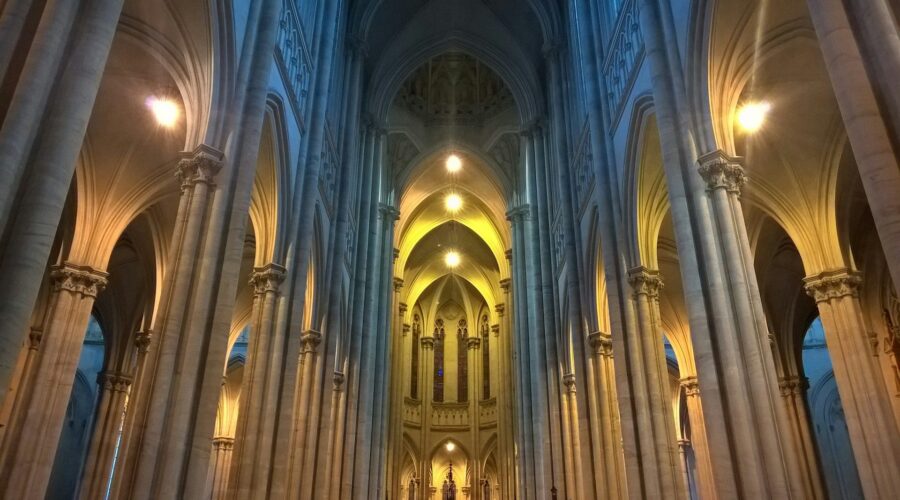
River Church: A Comprehensive Guide to Membership, Beliefs, and Practices
Introduction
River Church is a vibrant and growing body of believers with a strong emphasis on community, discipleship, and mission. Established in 2006, the church has grown exponentially, establishing multiple campuses across the country and reaching a global audience through its online presence.
Membership
Becoming a Member
Membership at River Church is open to all who have placed their faith in Jesus Christ as their Savior. The process of becoming a member involves completing a membership class, which covers the church’s history, beliefs, and core values.
Benefits of Membership
- Access to exclusive events and resources
- Voting rights in church matters
- Opportunities for service and leadership
- Support and accountability within the Christian community
Beliefs
Core Doctrine
River Church holds to the following core beliefs:
- The Bible is the authoritative Word of God.
- God is a Trinity: Father, Son, and Holy Spirit.
- Jesus Christ is the Son of God and Savior of humanity.
- Salvation is only possible through faith in Jesus Christ.
- Believers are called to live a life of obedience and love.
Distinctive Beliefs
While sharing the core tenets of the Christian faith, River Church also holds to the following distinctive beliefs:
- Community: The church places a high value on creating a sense of community among its members, fostering relationships and fostering spiritual growth.
- Discipleship: River Church emphasizes intentional discipleship, helping members grow in their understanding of the Bible, faith, and Christian living.
- Mission: The church is passionate about reaching out to the community and world with the message of Jesus Christ, through evangelism and social outreach.
Practices
Worship Services
River Church hosts regular worship services, which typically include music, preaching, and prayer. The services are designed to create a welcoming and engaging environment where attendees can connect with God.
Small Groups
Small groups are a fundamental part of River Church’s ministry, providing members with a smaller, more intimate setting for fellowship, Bible study, and prayer.
Outreach and Mission
River Church is committed to serving the community and reaching out to those in need. The church participates in various outreach programs, including community cleanup events, feeding the homeless, and supporting local nonprofits.
Online Presence
River Church maintains a strong online presence through its website and social media channels. These platforms provide updates on church events, offer online sermons and Bible studies, and facilitate community engagement.
Conclusion
River Church is a dynamic and growing community of believers that welcomes all who seek to deepen their relationship with Jesus Christ. With its emphasis on community, discipleship, and mission, River Church provides a supportive and nurturing environment for spiritual growth and an opportunity to make a difference in the world.
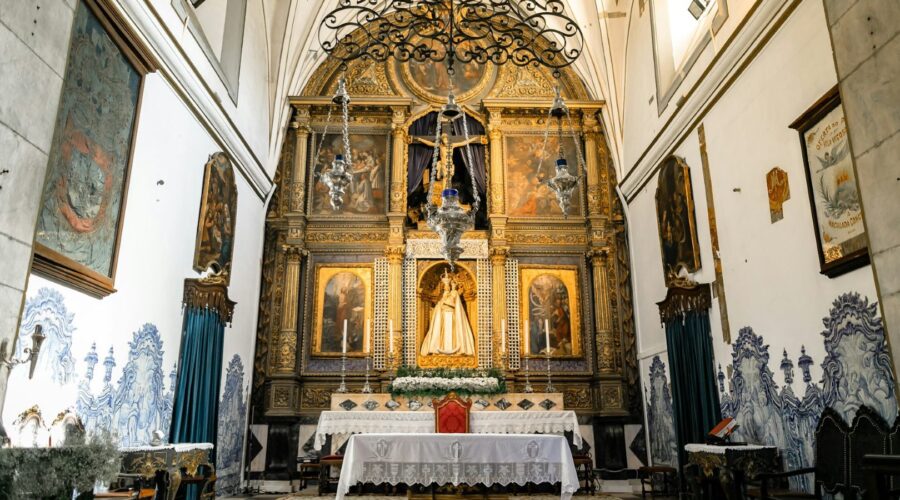
Unlocking the Mysteries of Destiny Church: A Comprehensive Guide
Introduction
Nestled in the heart of Texas, Destiny Church has emerged as a prominent Evangelical megachurch with a global reach. Founded in 1996 by Pastors Steven and Kandace Furtick, the church has captured attention for its dynamic worship services, transformative teaching, and impactful community outreach programs.
This comprehensive guide delves into the multifaceted aspects of Destiny Church, exploring its history, core beliefs, leadership, community engagement, and global impact.
History and Foundation
Early Beginnings
Destiny Church traces its roots to a small Bible study group founded by Steven and Kandace Furtick in 1996. The group met in their apartment and quickly grew, prompting them to secure a larger venue.
Exponential Growth
Over the years, Destiny Church experienced remarkable growth, moving into progressively larger facilities to accommodate its expanding congregation. Today, it boasts multiple campuses across the United States and satellite locations worldwide.
Core Beliefs
At the core of Destiny Church’s teachings lies a fundamental belief in the power of God’s grace, love, and the transformative nature of Jesus Christ.
The Gospel
Central to the church’s message is the belief that salvation is attained solely through the grace of God, apart from human works. Emphasis is placed on the death, resurrection, and ascension of Jesus Christ as the ultimate sacrifice and path to eternal life.
Grace and Redemption
Destiny Church teaches that God’s grace extends to all, regardless of past mistakes or shortcomings. Redemption and restoration are central themes, encouraging individuals to seek forgiveness and experience the transformative power of God.
Leadership
Pastors Steven and Kandace Furtick
The church is led by Pastors Steven and Kandace Furtick, who have been instrumental in shaping its vision and mission. Steven Furtick is known for his engaging preaching and biblical insights, while Kandace Furtick leads various ministry initiatives and serves as a guiding voice for the female congregation.
Leadership Structure
Destiny Church operates under a leadership structure that includes a team of associate pastors, elders, and deacons. These leaders provide guidance, oversight, and support to the congregation, ensuring its smooth functioning.
Community Engagement
Beyond its religious services, Destiny Church is deeply involved in community outreach programs that aim to impact the surrounding areas positively.
HOPE City
HOPE City is a holistic initiative that provides various services to the underprivileged, including food assistance, housing programs, and education opportunities. It seeks to bring hope and practical support to those in need.
Elevation Outreach
Elevation Outreach focuses on global humanitarian efforts, partnering with organizations to address poverty, hunger, and disaster relief. The church actively supports mission trips and provides resources to communities in need.
Global Impact
Destiny Church’s influence extends far beyond its local boundaries, reaching believers worldwide.
Online Presence
The church has a robust online presence, broadcasting its services and providing access to teachings, resources, and online communities. This extends its reach to millions around the globe.
Church Planting
Destiny Church actively supports and facilitates church planting efforts around the world, partnering with local leaders to establish new congregations and expand the church’s global footprint.
Mission Trips
Members of Destiny Church regularly participate in mission trips, serving communities in various countries and continents. These trips provide tangible support, foster cross-cultural understanding, and spread the message of hope.
Conclusion
Destiny Church stands as a testament to the transformative power of faith. Through its compelling worship, insightful teachings, and impactful community engagement, it continues to inspire and equip individuals worldwide. As the church navigates the challenges and opportunities of the future, its unwavering commitment to the Gospel and service to others will undoubtedly continue to shape its legacy.
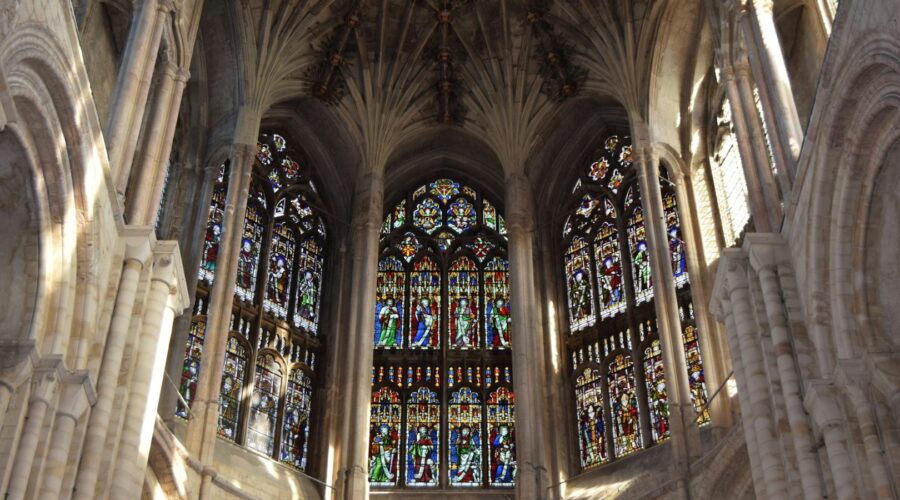
Unveiling the Word of Faith Church: A Comprehensive Guide
Introduction
The Word of Faith movement, a branch of charismatic Christianity, has garnered attention for its distinct doctrines and practices. This comprehensive guide delves into the core beliefs, history, and controversies surrounding the Word of Faith Church, enabling readers to gain a multifaceted understanding of this religious movement.
Core Beliefs
Positive Confession
Word of Faith churches emphasize the power of positive confession, believing that spoken words have the ability to shape reality. Members are encouraged to declare positive affirmations about their health, finances, and relationships.
Faith Healing
Faith healing is a central aspect of the Word of Faith movement. Believers trust in God’s ability to miraculously heal illnesses and diseases through prayer and the laying on of hands.
Prosperity Gospel
Many Word of Faith churches promote the prosperity gospel, which teaches that God desires his followers to be wealthy and successful. They believe that by giving generously and exercising faith, believers can unlock God’s blessings.
History
The Word of Faith movement originated in the early 20th century, with roots in the Pentecostal and charismatic movements. Key figures include Kenneth Hagin, Kenneth Copeland, and Oral Roberts.
In the 1970s and 1980s, the Word of Faith Church gained significant popularity through television ministries and conferences. Today, it has a global presence with millions of followers.
Controversies
Financial Abuse
Some Word of Faith churches have been accused of financial abuse, with leaders pressuring members to donate large sums of money.
False Teachings
Critics argue that the Word of Faith movement promotes false teachings, such as the idea that believers can control God’s will through their words and actions.
Health Risks
The emphasis on faith healing has raised concerns about the potential health risks associated with discouraging believers from seeking medical attention.
Assessment
Positive Aspects
- Emphasis on faith and positive thinking
- Focus on personal transformation
- Community and support network
Negative Aspects
- Potential for financial exploitation
- Promotion of unbiblical teachings
- Discouragement of medical care
Tips for Evaluating Word of Faith Churches
- Research the church’s beliefs and practices
- Attend services to observe their teachings
- Seek biblical guidance and the opinions of trusted pastors
- Be wary of churches that pressure you into giving large sums of money
- Remember that true faith is not based on material wealth or personal achievements
Conclusion
The Word of Faith Church presents a complex and multifaceted movement. While it offers potential for faith and transformation, it is important to approach it with discernment and caution. By understanding its core beliefs, history, and controversies, individuals can make informed decisions about their involvement in this religious movement.
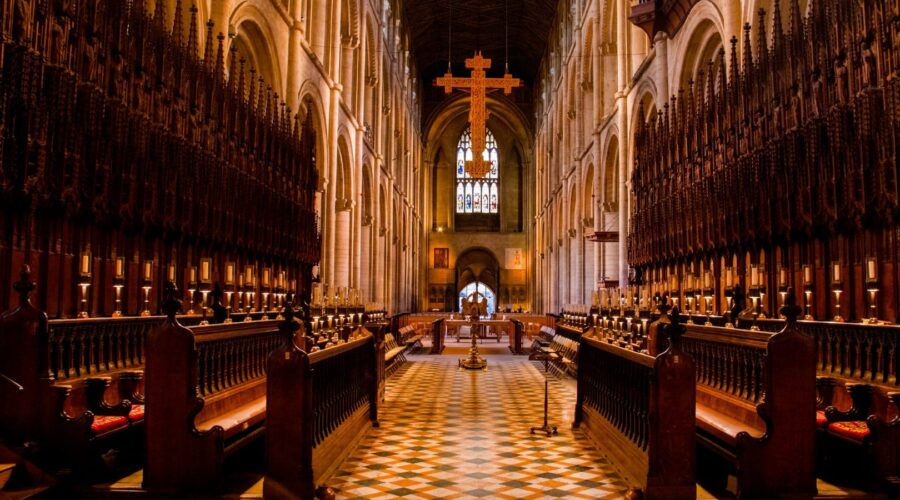
Welcome to Trinity Lutheran Church: A Spiritual Haven in the Heart of the Community
About Trinity Lutheran Church
Trinity Lutheran Church is a vibrant and welcoming Christian community rooted in the Lutheran tradition. Established in 1851, we have a rich history of serving the spiritual, educational, and social needs of our congregation and the surrounding community.
Our mission is to proclaim the Gospel of Jesus Christ, nurture spiritual growth, and promote Christian service. We believe in the power of community, the importance of faith formation, and the transformative nature of God’s love.
Our Beliefs and Values
As a Lutheran church, we adhere to the teachings of the Augsburg Confession, which emphasizes:
* Justification by grace alone through faith in Jesus Christ
* The authority of Scripture as the inspired Word of God
* The importance of the sacraments of Baptism and Holy CommunionWe believe in the Trinity (God as Father, Son, and Holy Spirit), the divinity of Jesus Christ, and the resurrection of the body.
Our core values include:
* Compassion and Love
* Inclusivity and Welcome
* Service and Outreach
* Spiritual Growth and Discipleship
* Biblical Truth and TraditionOur Ministries and Programs
Trinity Lutheran Church offers a wide range of ministries and programs to meet the needs of our congregation and the community. These include:
Worship Services
* Sunday Worship: 9:00 AM (Traditional) and 11:00 AM (Contemporary)
* Weekday Services: Monday-Friday at 12:15 PM (Chapel Service)Sunday School
* Children’s Classes: 9:00 AM and 11:00 AM
* Adult Classes: 9:00 AM and 11:00 AMYouth Programs
* Confirmation Class (Grades 7-8)
* Luther League (Grades 9-12)Music Ministry
* Adult Choir
* Handbell ChoirOutreach Programs
* Community Food Pantry
* Clothing Closet
* Disaster Relief AssistanceSocial Events
* Coffee Fellowship on Sundays
* Monthly Potlucks
* Family NightsOpportunities for Involvement
We invite you to become an active part of our vibrant community. There are numerous ways to get involved, including:
* Volunteering in our ministries and programs
* Participating in Bible studies and small groups
* Attending special events and outreach activities
* Serving on committees and boards
* Sharing your gifts and talents with the congregationOur Location and Contact Information
Trinity Lutheran Church is conveniently located at 123 Main Street, Anytown, CA 12345. Our phone number is (555) 123-4567.
- Website: www.trinitylutheranchurch.org
- Email: [email protected]
Join Our Community
We invite you to visit us and experience the warmth and welcome of our community. Whether you are new to the faith, exploring your spirituality, or looking for a deeper connection with God, we are here to serve you.
Let us journey together in faith, hope, and love.

Discover Turning Point Church: A Guide to Its History, Ministries, and Impact
Are you seeking a vibrant faith community that serves God and empowers individuals? Look no further than Turning Point Church, a dynamic and influential church with a rich history, diverse ministries, and a global impact.
History of Turning Point Church
Founded in 1979 by Pastor David Jeremiah, Turning Point was initially known as Scott Memorial Baptist Church. Over the years, the church has experienced remarkable growth, expanding to multiple campuses in the United States and establishing a global reach through various outreach programs.
Key Leaders and Milestones
- Pastor David Jeremiah: Senior Pastor and world-renowned author and speaker
- 1993: Establishment of Turning Point Ministries, expanding the church’s reach beyond its walls
- 2002: Inauguration of the Shadow Mountain Community Church campus in California
Ministries and Programs
Turning Point Church offers a comprehensive array of ministries and programs tailored to meet the needs of individuals at all stages of their faith journey:
Worship and Spiritual Growth
- Weekly worship services at various campuses
- Small groups for Bible study, prayer, and community
- Adult, youth, and children’s ministries
Outreach and Compassion
- Local and global outreach programs addressing poverty, hunger, and homelessness
- Care ministries for the sick, elderly, and grieving
- Partnerships with organizations to serve the community
Education and Training
- Turning Point Bible College: Offers biblically-based education and training
- Jeremiah Institute: Provides leadership and ministry development programs
- Workshops and conferences: Equip and inspire believers in their faith
Global Impact
Turning Point Church’s influence extends far beyond its local campuses:
Radio and Television Programs
- “Turning Point Radio”: Daily broadcasts reaching millions worldwide
- “The Turning Point”: Weekly television program featuring Pastor Jeremiah’s messages
Missions and Partnerships
- Partnerships with ministries in over 100 countries
- Support for missionaries, church planting, and humanitarian aid
How to Get Involved
To become part of the Turning Point Church community, individuals can explore the following options:
Attend Services
Visit one of the Turning Point campuses for weekly worship services and connect with the congregation.
Join a Small Group
Engage in deeper fellowship and Bible study by joining a small group tailored to your interests and needs.
Get Involved in Ministry
Discover opportunities to serve the community and use your gifts within the various ministries offered by the church.
Support Outreach Efforts
Contribute to the church’s local and global outreach initiatives by donating, volunteering, or sponsoring projects.
Conclusion
Turning Point Church is a dynamic and multifaceted faith community that empowers individuals to grow in their relationship with God, serve their neighbors, and make a difference in the world. With its rich history, transformative ministries, and global impact, Turning Point welcomes all who seek a meaningful and fulfilling faith experience.

Discover the Enchanting History of the Church of the Rock: An Architectural Masterpiece
Introduction
Nestled amidst the tranquil landscapes of southern Cappadocia, Turkey, lies the remarkable Church of the Rock, a captivating monument that embodies the rich cultural heritage of the region. Carved into the volcanic cliffs along the Göreme Valley, this ancient sanctuary offers a breathtaking glimpse into the architectural ingenuity and religious devotion of a bygone era.
History and Significance
The Church of the Rock is believed to have been constructed in the 9th or 10th century A.D., during the Byzantine period. It served as a place of worship for the local Christian community and became an important center of monastic life. The church’s strategic location on the Silk Road ensured a steady stream of travelers and pilgrims, contributing to its growing significance.
Architectural Marvel
The most striking feature of the Church of the Rock is its unique architectural style. The entire structure is carved directly into the soft volcanic rock, creating a harmonious blend of nature and architecture. The exterior facade boasts intricately carved reliefs depicting biblical scenes and religious figures.
Interior Sanctuary
The church’s interior is equally impressive. The spacious main chamber is adorned with vibrant frescoes, which have been preserved in remarkable condition over the centuries. These frescoes depict biblical narratives, saints, and scenes from the life of Jesus Christ.
Chapel of Saint Basil
Adjoining the main chamber is the Chapel of Saint Basil, a smaller chapel dedicated to the renowned saint. The chapel’s walls are covered in stunning frescoes, including a captivating portrayal of Basil’s life and miracles.
Frescoes and Iconography
The frescoes within the Church of the Rock are among the finest examples of Byzantine art in Cappadocia. They depict a wide range of religious themes and demonstrate the extraordinary skill of the artists who created them.
Biblical Narratives
Many of the frescoes depict scenes from the Bible, such as the birth of Jesus Christ, his crucifixion, and his resurrection. These images served as visual aids for illiterate viewers and helped to convey the teachings of the Christian faith.
Saints and Martyrs
The frescoes also feature numerous saints and martyrs, who were revered by the local community. These figures are depicted with halos and other symbolic attributes, representing their holiness and sacrifice.
Monastic Life and Community
In addition to its architectural and artistic significance, the Church of the Rock also played an essential role in monastic life. Monks and nuns resided in the cave dwellings surrounding the church, dedicating their lives to prayer, study, and manual labor.
Monastic Complex
The monastic complex includes a series of interconnected caves and tunnels, which provided living quarters, storage areas, and workshops for the monks. Visitors can still explore these spaces today, gaining insight into the daily lives of these devoted individuals.
Restoration and Preservation
Over the centuries, the Church of the Rock has undergone several restoration and preservation efforts to protect its priceless frescoes and architectural integrity. In the 1980s, the church was declared a UNESCO World Heritage Site, recognizing its outstanding universal value.
Tourism and Accessibility
Today, the Church of the Rock is one of the most popular tourist destinations in Cappadocia. Visitors can marvel at the architectural splendor, explore the cave dwellings, and immerse themselves in the rich history of this ancient monument. The church is easily accessible from the nearby town of Göreme, and guided tours are available for a deeper understanding of its significance.
Tips for Visitors
* Visit during the shoulder season (April-May and September-October) to avoid crowds and enjoy milder temperatures.
* Wear comfortable shoes as the terrain surrounding the church can be uneven.
* Bring a camera to capture the breathtaking views and intricate frescoes.
* Respect the sanctity of the church and refrain from making excessive noise or touching the frescoes.
* Consider booking a guided tour to gain valuable insights into the church’s history and architectural features.Conclusion
The Church of the Rock stands as a testament to the artistic prowess, religious devotion, and cultural diversity that thrived in Cappadocia during the Byzantine period. Its stunning architecture, vibrant frescoes, and fascinating monastic history make it a must-visit destination for anyone interested in exploring the region’s rich heritage and natural beauty.
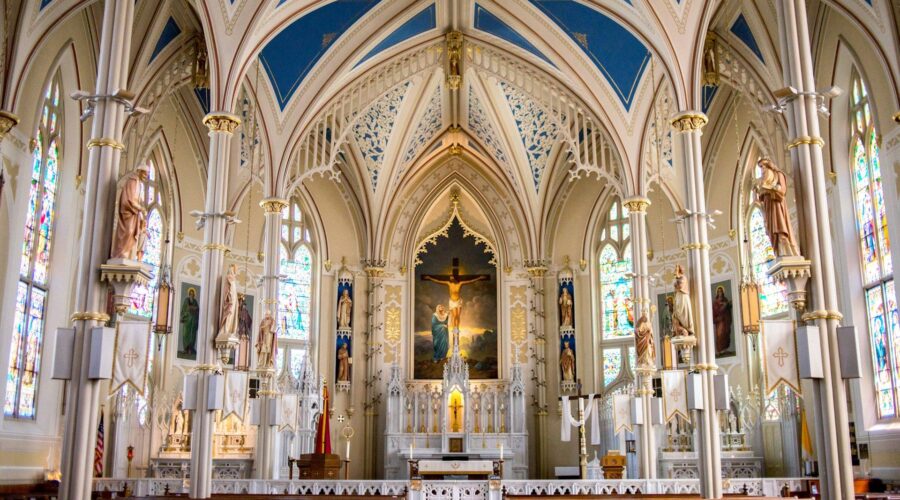
The Redeemer Church: A Comprehensive Guide
Introduction
The Redeemer Church is a vibrant Christian community with a presence in various locations across the globe. This blog delves into the history, beliefs, practices, and contributions of the Redeemer Church, providing insights into its mission and impact.
History and Background
The origins of the Redeemer Church can be traced back to the 19th century, with the establishment of individual congregations in different cities. These congregations gradually coalesced over time, forming a larger network of churches.
- New York City Origins: The Redeemer Presbyterian Church in New York City was founded in 1830 and later became a prominent congregation.
- Growth and Expansion: Throughout the 20th century, the Redeemer Church expanded its reach, planting new churches and establishing a global presence.
Beliefs and Core Values
The Redeemer Church adheres to a set of core beliefs:
The Trinity
The belief in one God who exists as three distinct persons: the Father, the Son, and the Holy Spirit.
Jesus Christ
The belief that Jesus Christ is the Son of God and the Savior of humanity, who died and rose again to redeem believers from sin.
The Bible
The belief that the Bible is the inspired Word of God and the ultimate authority for faith and practice.
The Great Commission
The belief in the mandate to spread the Gospel of Jesus Christ to all nations.
Practices and Worship
The Redeemer Church values congregational worship and engagement:
Sunday Services
Weekly gatherings for worship, sermons, and communion, often accompanied by music and singing.
Small Groups
Smaller gatherings for Bible study, prayer, and fellowship, fostering community and spiritual growth.
Missionary Work
Outreach and support for mission programs around the world, providing humanitarian aid and spreading the Gospel.
Contributions and Impact
The Redeemer Church has made significant contributions to society:
Social Justice
Advocacy for social justice, poverty alleviation, and equal rights, reflecting Christian values of compassion and service.
Education
Establishment and support of Christian schools and educational institutions, providing quality education based on Christian principles.
Healthcare
Operation of hospitals, clinics, and healthcare programs, offering medical care and support to communities in need.
Global Presence
The Redeemer Church has an extensive global presence:
- North America: Large congregations in New York City, Boston, Chicago, and other major cities.
- International: Churches in Europe, Asia, Africa, and South America, serving diverse communities.
Conclusion
The Redeemer Church is a diverse and impactful Christian community with a rich history, strong beliefs, and a focus on worship, outreach, and service. Its contributions to social justice, education, and healthcare have made a tangible difference in the lives of many around the world. As the Redeemer Church continues to grow and expand, it remains committed to its mission of spreading the Gospel and serving its communities.